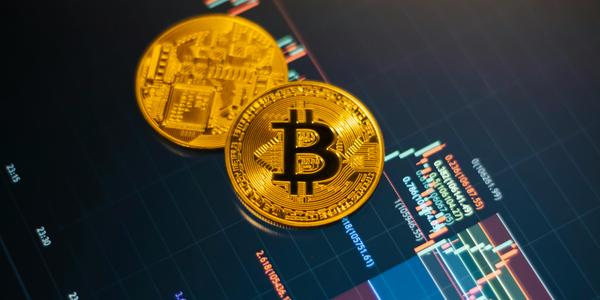Solana’s native token SOL has staged a cautious rebound, climbing about 8% since slipping to $222 on November 26. Even with this uptick, a portion of investors remains wary, pointing to the sharp pullback from its all-time high of $263.80 reached on November 23 as a potential warning sign for the near-term trajectory of the bull run. Yet, a closer look at on-chain and derivatives data paints a different picture: SOL still appears to hold substantial upside potential. The market backdrop shows a nuanced split in sentiment—some observers fear a correction, while others highlight strengthening fundamentals that could extend the recovery. This article dives into the factors behind SOL’s current position, the on-chain dynamics supporting continued upside, and the interplay with Ethereum and broader DeFi ecosystems. It also examines the futures market signals that traders are watching and weighs the implications for risk, reward, and timing.
Market pulse and price action
Solana’s price action in late November underscored a volatile but potentially constructive healing phase following the dip to $222 on November 26. Although SOL remains well below its November 23 peak of $263.80, the eight-percent move off the low signals a continuing attempt by buyers to regain ground after a week characterized by mixed momentum across the wider crypto space. In assessing the intensity of the rebound, it is crucial to place SOL’s performance in the context of the broader altcoin market during the same period. Between November 20 and November 27, SOL posted a modest one-percent gain, while the broader altcoin market capitalization advanced by roughly 12%. This divergence highlights a moment of selective strength within the crypto sector, where several alternative tokens outperformed markedly.
The outperformance of specific altcoins during this window—Stellar (XLM), Celestia (TIA), Fantom (FTM), Uniswap (UNI), and Polkadot (DOT)—with 40% or greater gains, provides additional color on the sentiment landscape. Such moves often reflect a combination of rising investor appetite for diversified exposure, sector rotations, and the re-pricing of risk assets in a market that remains sensitive to macro cues and internal catalysts. While pinpointing a single catalyst for shifting sentiment is challenging, the pattern suggests that SOL holders and traders should monitor a broader ecosystem dynamic rather than isolating SOL price as a stand-alone indicator.
Within this framework, SOL’s near-term prospects are anchored by a sequence of fundamental developments that have helped to re-anchor expectations around the network’s growth trajectory. The Solana ecosystem is expanding, with continued attention to developer activity and user engagement—metrics that are closely watched by market participants assessing the durability of SOL’s value proposition. The sustained resilience in on-chain activity is complemented by a notable increase in the network’s total value locked (TVL) during the 30 days ending November 27, signaling rising capital inflows into Solana-based protocols and liquidity pools. This backdrop helps to explain why even as SOL’s price paused after its prior run, investors continued to allocate capital to Solana-centric DApps and services in anticipation of further growth.
In a broader cross-chain context, Solana’s relative performance must be viewed against parallel activity on other networks. The data show deposits on the BNB Chain rising 14% over the same 30-day window, while the Tron network’s TVL grew by 13%. These comparative figures illustrate that Solana’s gains are not occurring in a vacuum; they reflect a wider acceleration in DeFi and DApp ecosystems across multiple platforms. Within Solana specifically, several marquee on-chain services registered meaningful expansions: Jito, the liquid staking solution, reached approximately $3.4 billion in deposits, up about 44%; the Jupiter decentralized exchange posted roughly $2.4 billion in TVL, up about 50%; and Raydium, another major on-chain liquidity and trading venue, stood around $2.2 billion, up about 58%. Together, these numbers point to a material upshift in user engagement and capital allocation toward Solana’s on-chain infrastructure, reinforcing the case that SOL’s weakness is more tactical than structural.
The growth in deposits and TVL is interpreted by many market observers as a proxy for demand for SOL as a core governance, staking, and transaction fee asset, which in turn supports continued ecosystem expansion. The surge in these on-chain metrics aligns with the broader narrative of Solana strengthening its position as a leading programmable blockchain with a robust developer community and a vibrant array of DApps. The juxtaposition with other networks’ activity underlines Solana’s ability to attract capital and usage even amid competition and occasional network-related concerns that have historically weighed on investor confidence. Taken together, the price action, the 30-day TVL growth, and the size of key protocol deposits suggest that SOL may be on a path toward renewed upside, provided the ecosystem remains resilient and continues to attract liquidity.
The section below delves deeper into the structural fundamentals underpinning Solana’s revival, including the ways in which the network’s expanding DApp ecosystem and liquidity infrastructure inform risk-adjusted return expectations for SOL holders.
Deep dive into SOL’s DApp-driven liquidity dynamics
Solana’s ecosystem growth has been characterized by several standout liquidity and staking metrics that speak to the health and trajectory of the network. The Jito liquid staking solution, with deposits reaching $3.4 billion and rising about 44%, represents a major liquidity channel that can contribute to staking yields and capital efficiency on Solana. This influx of funds helps to support network security and validator incentives, which are essential to maintaining the network’s reliability and throughput. In parallel, the Jupiter decentralized exchange remains a central hub for on-chain trading, with TVL approaching $2.4 billion and a 50% year-over-year increase in liquidity provisioning. Raydium, another well-established DApp on Solana, recorded about $2.2 billion in TVL, marking a notable 58% rise that reflects the platform’s growing role in liquidity provision and user onboarding.
These figures illuminate a broader trend: a rapid expansion of the Solana on-chain economy, driven by improved user experience, faster settlement times, and a community that continues to deliver new use cases for SOL. The growth in TVL across these core platforms is not merely a reflection of higher token prices but indicates a deeper adoption dynamic, with more users and developers opting to participate in Solana’s ecosystem. The implied demand for SOL, fueled by the expansion of the DApp ecosystem and enhanced liquidity infrastructure, could underpin further price appreciation if the current dynamics persist. This interpretation aligns with the observation that Solana is solidifying its position as the second-largest programmable blockchain by developer activity and user engagement, a distinction that carries meaningful implications for market perception, capital allocation, and potential upside for SOL.
Solana fundamentals and cross-network positioning
The Solana network has consistently emphasized a balance between high throughput, developer-friendly tooling, and a growing suite of DApps designed to attract users and capital alike. In this context, Solana’s fundamentals—ranging from transaction throughput to the variety and depth of on-chain services—play a critical role in shaping investor expectations for SOL’s long-term value. The reported rise in TVL across Solana-based platforms, coupled with the expansion of liquidity and staking mechanisms, signals a healthy feedback loop: stronger on-chain activity draws more developers, which in turn attracts more users and liquidity, further reinforcing the network’s utility and appeal to both retail and institutional participants.
Within this framework, SOL’s relative advantage is not purely a function of on-chain throughput. It also reflects the ecosystem’s ability to attract differentiated use cases and category-leading DApps that contribute to the network’s overall value proposition. The Jito liquid staking solution highlights how Solana is pursuing innovative approaches to capital efficiency, allowing stakers to earn yields while maintaining liquidity. Jupiter’s DEX remains central to on-chain liquidity and price discovery on Solana, while Raydium’s growth reinforces the presence of robust automated market-making and liquidity provisioning capabilities. The cumulative effect is a more attractive environment for users seeking fast settlement, low-cost transactions, and a broad spectrum of DeFi and DApp activities.
Binance Smart Chain (BNB Chain) and Tron’s rising TVLs illustrate a broader trend in the crypto market: alternative networks are also attracting capital and activity, which underscores the shifting landscape of DeFi and programmable blockchains. However, Solana’s 30-day TVL uptick and the performance of its foundational DApps imply that the SOL ecosystem is not merely benefiting from macro liquidity alone; it is also delivering meaningful on-chain activity and value extraction through its own native platforms. This combination—strong on-chain activity, expanding DApp liquidity, and a diversified set of major DApps—positions Solana to sustain demand for SOL, thereby supporting potential price appreciation, provided external factors and internal network health remain favorable.
Solana and Ethereum: complementary ecosystems rather than direct competitors
A common narrative in crypto markets frames Solana as a competitor to Ethereum (ETH), with debates about which network better serves particular use cases. However, the data available over the recent period suggest that Solana and Ethereum can experience growth independently, expanding their respective user bases and use-case coverage without eroding one another’s value proposition. On-chain activity on Ethereum rose by about 47% in the last 30 days, indicating robust network utilization and demand for ETH-denominated services. Uniswap’s on-chain volumes surged by roughly 62% during the same period, illustrating continued demand for decentralized exchange capabilities on Ethereum. CoW Swap, another prominent DeFi venue, achieved a 71% gain, underscoring the network’s ongoing ability to attract liquidity and trading activity.
Notably, despite Solana’s dominance in certain segments, Ethereum continues to be the network of choice for broader DeFi opportunities. Yet, Solana’s top-performing DApps—Raydium, Jito, and Pump.fun—rank among the top five in terms of gross revenue, surpassing Ethereum’s leaders such as Lido, Uniswap, and Aave in that specific metric. This observation highlights that both networks can grow their ecosystems in parallel, serving different niches within the broader decentralized finance and decentralized application landscape. The coexistence of multiple thriving networks challenges the notion that the market can only reward one chain at a time and instead points to a multi-chain future where diverse ecosystems capture value by specializing in distinct use cases and developer communities.
Nonetheless, the Solana ecosystem’s dependence on memecoins introduces a unique risk layer that ETH does not face to the same extent. Tokens like BONK, POPCAT, MEW, and SPX6900—some of which surged by more than 100% in a three-month window—exemplify the speculative zeal that can drive short-term price action on Solana. While speculative activity can inject liquidity and attract new users, it can also introduce volatility and potential downside if the narrative shifts or the speculative cycle cools. This risk underscores the importance of distinguishing between price dynamics driven by speculative froth and those rooted in fundamental network growth, real用户 demand, and sustainable usage of SOL as a governance token, staking instrument, and fuel for a diversified DApp ecosystem.
Assessing the competitive dynamics between Solana and Ethereum requires a nuanced lens that accounts for on-chain activity, ecosystem depth, and the quality of use cases. Solana’s strengths in memecoin activity and high-throughput transactions can complement Ethereum’s broad DeFi and enterprise-grade capabilities. The prospect of parallel growth across both networks increases the potential for overall market expansion in the space and raises the likelihood of multiple revenue streams for SOL holders—ranging from staking yields and network fees to liquidity mining and token appreciation tied to ecosystem expansion.
The role of memecoins and risk management
The Solana narrative’s memecoin dimension—highlighted by tokens that have surged dramatically in short timeframes—contributes to a broader price discovery process that can attract new participants but also heightens cyclicality risk. The presence of speculative tokens can amplify price swings, particularly during periods of heightened market volatility or shifting investor sentiment. While some traders view memecoins as entry points into a rapidly expanding ecosystem, others emphasize the risk of sustainability concerns if speculative frenzy cannot be anchored by durable user adoption and long-term value creation.
From a risk management perspective, investors and ecosystem participants should track indicators beyond price movements, including on-chain activity, DApp engagement, and the durability of liquidity across major Solana-native platforms. Monitoring the balance between speculative inflows and substantive usage will be crucial to discerning whether SOL’s upside is primarily narrative-driven or anchored in tangible, long-running value creation within the ecosystem.
Futures, sentiment, and market psychology
To evaluate whether traders have shifted sentiment on SOL in the wake of a roughly 10% decline between November 23 and November 27, one useful lens is the futures market, particularly the premium embedded in monthly futures relative to the spot price. In stable market conditions, futures contracts typically trade at a premium of roughly 5% to 10% above spot prices to account for the settlement delay. For SOL, current data show an annualized premium of about 23% on two-month futures, the highest level seen in seven months. This elevated premium indicates that traders are pricing in higher future prices and are generally more inclined to hold long positions, signaling optimism about near-term upside potential.
However, there is a caveat: when the futures premium becomes excessively bullish—rising above the 40% threshold—it can introduce heightened risks of cascading liquidations if the market experiences a rapid correction. In other words, while a high futures premium can reflect strong bullish sentiment, it also raises the stakes for risk management and disciplined trading to avoid sharp losses during abrupt market reversals. The current 23% premium sits in a high-but-manageable range, suggesting constructive sentiment without crossing into extreme complacency. Traders should continue to monitor this metric, along with other indicators such as funding rates, open interest, and volatility measures, to gauge the balance between optimism and risk.
The confluence of on-chain activity and derivatives data paints a cautiously favorable picture for further SOL appreciation. With Solana’s market capitalization around $113.7 billion, the token trades at a significant discount relative to Ethereum’s roughly $429.4 billion market cap—about 73% lower. This valuation gap implies substantial room for multiple expansion if Solana’s growth drivers persist and the market assigns greater value to its expanding DApp ecosystem, robust liquidity infrastructure, and the potential for continued outperformance in key use-case segments. While catalysts such as improved network reliability, enhanced developer activity, and successful onboarding of new institutional participants could support such upside, investors should remain cognizant of the broader macro environment and the inherent volatility of crypto markets.
The price-discovery narrative for Solana is also influenced by relative performance among competing networks and the overall health of decentralized ecosystems. The combination of strong on-chain metrics, a thriving and increasingly diverse set of DApps, and a demonstrable capacity to attract capital into staking and liquidity channels are all supportive of a scenario in which SOL could experience further price appreciation. Yet, the risk profile remains nuanced: Solana’s reliance on memecoins adds a layer of speculative risk that could amplify drawdowns if market conditions reverse quickly. Investors should weigh these dynamics carefully, balancing the potential for upside with prudent risk controls and diversification across a multi-chain framework.
Valuation, upside potential, and macro context
From a valuation standpoint, SOL appears to offer substantial upside potential relative to its current price trajectory and on-chain fundamentals. The network’s on-chain activity and the growing gravity of its DApp ecosystem contribute to a more favorable supply-demand balance for SOL, potentially supporting a higher multiple on future cash flows generated by staking yields, network fees, and liquidity mining. The large differential versus Ethereum in market cap creates a broad runway for upside if Solana continues to execute on its strategic priorities and if investor appetite for high-throughput, low-cost networks remains strong in a multi-chain environment.
The upside case is reinforced by the resilience of the Solana ecosystem in attracting and retaining liquidity, as evidenced by the 30-day TVL growth and the standout performance of core platforms like Jito, Jupiter, and Raydium. The scaling of these platforms—together with ongoing improvements in network reliability and developer tooling—could sustain a virtuous cycle of higher transaction volumes, greater user adoption, and more robust token economics for SOL. In contrast, the risk-reward balance could tilt if memecoin-driven demand wanes and if macro headwinds or technical challenges reassert pressure on liquidity and market sentiment. A shift in narrative away from speculative tokens toward sustainable use cases and real-world DeFi activity on Solana would be a meaningful driver for long-term value.
In comparative terms, the Solana-ETH dynamic remains a study in coexistence rather than outright rivalry. The Ethereum network continues to demonstrate durable demand for DeFi and decentralized finance capabilities, with major platforms such as Uniswap and CoW Swap delivering meaningful volumes. Solana, meanwhile, differentiates itself through its capacity to attract rapid, low-cost transactions and a suite of high-growth DApps that are cultivating liquidity and user engagement at scale. The market’s framing of this multi-chain reality will influence SOL’s valuation path, as investors reassess risk and reward across the broader digital asset space.
Risks, uncertainties, and guardrails for investors
Despite the positive momentum in on-chain activity and the favorable dynamics of the DApp ecosystem, several risk factors warrant careful consideration for SOL holders and potential entrants. The most immediate risks include the volatility intrinsic to crypto markets and the potential for rapid sentiment shifts that can precipitate sharp price corrections. The memecoin-centric aspect of Solana’s ecosystem introduces a specific susceptibility to speculative bubbles that can inflate prices without commensurate fundamental backing, creating potential for sudden reversals if the speculative fervor cools or token interest migrates elsewhere.
Network reliability remains a critical risk factor to monitor. While Solana has made progress in stabilizing its network and expanding its capacity, any future outages or technical setbacks could erode investor confidence and disrupt active usage of DApps. In a multi-chain context, competition from Ethereum and other networks could intensify, potentially affecting Solana’s ability to attract new developers and capital. Regulatory developments affecting the broader crypto space could also alter investor risk perceptions and capital flows, impacting SOL’s upside potential. Lastly, while the on-chain data and derivatives signals look supportive, the market’s appetite for risk remains sensitive to macroeconomic conditions, including interest rate expectations, inflation data, and global market liquidity.
Nevertheless, the overall signal from on-chain, DApp, and derivatives data points toward a constructive setup for Solana, contingent on continued ecosystem growth and disciplined risk management. For investors looking to participate in this narrative, a balanced approach that incorporates multi-asset diversification, prudent exposure sizing, and ongoing monitoring of key metrics—such as TVL, DApp activity, and futures premiums—appears prudent. The convergence of strong fundamentals with a valuation discount relative to Ethereum creates a framework in which meaningful upside remains plausible, provided the ecosystem sustains its momentum and broader market conditions remain favorable.
Conclusion
Solana’s SOL has demonstrated resilience in a market characterized by rapid shifts in sentiment, with an 8% uptick from the November 26 low and a broader narrative of improving on-chain fundamentals. The network’s expanding DApp ecosystem is supported by notable TVL growth across core platforms such as Jito, Jupiter, and Raydium, which together underscore a thriving liquidity environment and increased engagement from developers and users. While SOL’s price has yet to reclaim its all-time high near $264, the combination of strengthening on-chain activity, a diversified set of high-performing DApps, and higher demand for staking and liquidity suggests a path toward continued upside potential. At the same time, SOL faces notable challenges, including its memecoin-driven risk profile and the broader macro and regulatory backdrop that governs the crypto space.
On the cross-chain front, Solana and Ethereum appear to be pursuing parallel growth trajectories rather than direct, one-for-one competition. Ethereum’s on-chain activity and DeFi volumes remain robust, while Solana continues to differentiate itself with high-throughput, low-cost transactions and a rapidly expanding DApp ecosystem. The elevated futures premium on SOL—currently around 23% annualized for the two-month tenor—signals investor optimism but also highlights the need for prudent risk controls, particularly if sentiment turns abruptly or if liquidity conditions tighten in a volatile market environment.
From a valuation perspective, SOL trades at a sizable discount to Ethereum’s market cap, suggesting meaningful headroom for upside should Solana maintain its growth trajectory and continue to attract capital into staking, liquidity, and DApp usage. Yet investors should approach this outlook with a balanced lens, recognizing the potential for speculative volatility and the necessity of ongoing ecosystem health. In summary, while the near term may retain an element of caution, the on-chain activity, liquidity expansion, and multi-chain dynamics present a plausible case for continued SOL appreciation, provided the ecosystem sustains momentum and external conditions cooperate.
This evolving narrative will depend on continued ecosystem expansion, the durability of Solana’s performance under varied market conditions, and the degree to which investors reward real utility and growth within the Solana ecosystem. As the market digests new data and shifts attention among cross-chain opportunities, SOL’s trajectory will hinge on its ability to translate on-chain growth into sustained price appreciation, while balancing risk and reward in a rapidly changing digital asset landscape.




